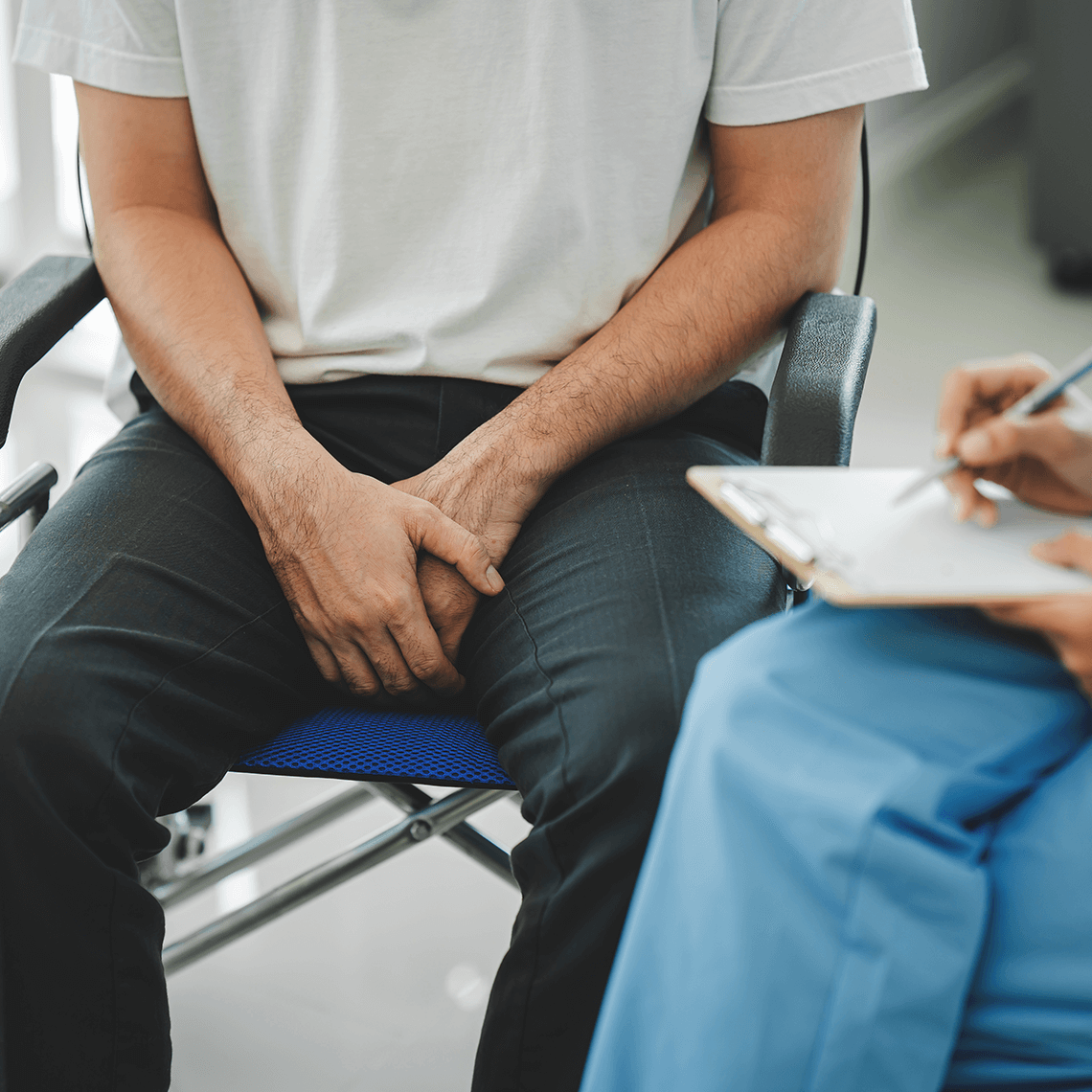Podcast
New Age of 45 for General Colorectal CA Screening
Jul 22, 2021

Commentators
- Joseph Feuerstein, MD
Transcript
Early in 2021, the US Preventive Services Task Force changed the starting age for its general colorectal cancer screening recommendation, lowering it from age 50 to 45.
Joining us to talk about this change and more is Dr. Joseph Feuerstein, a gastroenterologist at Beth Israel Deaconess Medical Center in Boston, and an advisor for “Prevention and Early Detection of Colorectal Cancer: A Decision Support Tool,” previously developed through CRICO. Dr. Feuerstein is also a member of a team in the Harvard medical system that is updating recommendations for screening and referrals.
Q.) Dr. Feuerstein, thank you for joining us. Why did the recommendation change to go down to 45?
A.) This is a great question as to why we’ve lowered the age of colon cancer screening to 45. This initial recommendation came from the Cancer Society groups where they looked at modeling studies and noted that already there would be a benefit from colon cancer prevention already starting at the age of 45. And it’s always balancing how we avoid over-screening, while also most importantly avoiding under screening patients in general.
In reviewing this, one of the key impetuses for this recommendation was the fact that we have seen this rise in incidents and prevalence in younger ages of colon cancer diagnoses. With this we know that the idea of colon cancer screening and prevention, this is really a procedure that we do and testing that we do to prevent colon cancer; our goal is that we want to identify the polyps or the precancerous lesions long before they ever become cancerous. And leaving the age at 50, there was already this group that was being missed who was developing polyps a little bit earlier and then already developing cancer by the age of 50. So by lowering the age to 45, this fits a little bit better with the age group of where people really start to develop polyps, which is usually some time in their 40s, and now we can capture those who are developing polyps maybe between ages 40-45 or even ages 35 and over. And then by doing the colonoscopy at 45, hopefully doing a colon cancer prevent procedure, we can identify high-risk lesions at an earlier stage and remove them before they ever become a cancer.
Q.) What does this mean on a practical level at the frontlines preventative side for the primary care physicians?
A.) This is always, I feel, a very important aspect of colon cancer screening and prevention. It really does start with the primary care physicians where they often are the ones identifying the patients who are appropriate for colon cancer screening and start that dialogue and that conversation about the importance of cancer screening. For the primary cares, they’re already inundated with so many different important questions and jobs to do and trying to really quarterback the health care for patients. At the same time we’re now asking them to really start thinking about colon cancer screening early on. This doesn’t necessarily mean to just start at age 45, that the clock starts at that age. Rather, it’s actually starting to address the concept of colon cancer screening with your patients already once they start turning 40 and above, that’s when you want to start the dialogue because the concept of colon cancer screening has changed from a one-stop shop of let’s say just doing colonoscopy or just doing some other screening procedure to what we call shared decision making. This concept should be is that really you should be looking at your patient’s risk profile. Those who are high risk really should be undergoing colonoscopy. That’s still our main procedure for anyone who’s high risk.
But importantly in the average risk cohort, these are the patients where you really should be having a shared decision-making discussion: what procedure should be done for colon cancer screening and prevention. And this is why it’s helpful to already start that dialogue before 45, because our goal is at 45, we already want that screening procedure or test to already be scheduled and completed. So that’s why for primary cares, I think this dialogue really has to start to sometime in the early 40s and discussed: should one do fit testing, fecal DNA testing, colonoscopy, or many of the other options for colon cancer screening and prevention, and have that discussion with the patients over which is the best procedure for that individual patient.
Q.) In this younger cohort, does that suggest sort of a different approach? We know that younger people have a different orientation towards health care sometimes, so does it mean a different modality or a different communication? What kinds of things can you adjust now that the age is going down?
A.) I think with the age going down, there are a lot of different challenges that come with the younger age as well, so with the younger age of cancer screening for colon cancer, there has to be a lot of discussions about, first off, that shared decision-making concept of which procedure should I do for this individual patient. There are cultural issues, there are different individual views that patients may have between a different test or a colonoscopy for example, their comfort with the concept of undergoing a colonoscopy. And the idea of lowering the age is we don’t want to scare people off from cancer screening procedures early on. Rather, we want them to kind of embrace their health care decisions and go through with the test that they initially feel is the right one for them. … Sometimes this may come down to something as simple as scheduling, where someone will say I just can’t take a day off from work right now, and the only way I can take a day off from work is if I know there is something really at risk. And for someone like that, the answer may be that doing either a FIT test or a fecal DNA test may actually be the best test. Because that would be a shared decision making that you have with a younger patient about not missing work, but there are some pretty good noninvasive colon cancer tests. But you have that discussion with the patient that if this test does come positive, then it does require a colonoscopy. That’s really a full shared decision making where it’s that discussion about doing noninvasive tests followed by what do you do if the result is positive.
Alternatively, you may have other patients where they may say look, I just want to do one test and be done as long as I can and not worry about this at all, and that’s where a lot of discussion may come around doing colonoscopy …where some people say I’d rather take 10 years and just undergo one procedure rather than have to do these noninvasive tests every 1-3 years, depending on which test is selected. … However, still what’s most important is that you select the appropriate test for your patient, and that really gets down to noninvasive cancer tests are really only appropriate at this time for your average risk patient.
But this is a really important group to discuss because if you push people away at this young age at 45 from doing their cancer screening tests, then it’s much less likely they will come back to doing it at any later states and, therefore, we could result in missing colon cancers if we’re not careful.
Q.) Excellent. If we step back and put it in a context of our organization and our mission, traditionally where do you see patient safety risks with CRC screening?
A.) One important thing when thinking about safety is, when thinking from an overall patient safety risk aspect of this screening program, it’s really important that every center and site has some system by which they’re going to bring patients in to a cancer screening and prevention program and then how is that followed up accordingly? Because that’s one of the biggest risks is that once we start that relationship with our patients and engage them in cancer screening, then if we lose that engagement, that’s a significant risk both to us and to our patients as well.
And that’s why it’s very important that, for example, if one selects a noninvasive cancer screening test, what system does your site have in place to make sure that if that is a positive test, that patient will be directed to a colonoscopy-based screening procedure that is scheduled and then is actually attended, and then what the follow-up is following that procedure. Any break in that system would result in a suboptimal cancer screening program.
Similarly, if you have a colonoscopy, let’s say, and one undergoes colonoscopy-based screening, what systems do you have in place to make sure that we reengage these patients afterwards and have their follow-up colonoscopy scheduled? Likewise, if they have a negative noninvasive cancer screening test, what systems does the program have in place that these patients are recalled for their noninvasive screening at the right interval.
Part of this is as simple as just keeping track of what are the appropriate numbers to reach your patient at? What is the correct address to mail the letters to? If you don’t have accurate demographics on your patients, the whole system is already going to fall apart. And that’s where this really starts with keeping your patients engaged throughout this time point and not necessarily just that time point A where you do the initial test and then time point B when you’re ready to do the follow-up. There still has to be some engagement throughout to make sure that you really get to that second time point, and that’s really how to make a truly safe, high-quality colon cancer screening program.
I think the main risk from the primary care standpoint is that initial engagement with the patient, how do initially engage your patient to start the colon cancer screening and prevention process? What information do you really provide your patient about the differences between the different available tests and did you make sure that those that are eligible for cancer screening got the appropriate test?
For example, someone who is bleeding or someone who has significant weight loss should probably not undergo a noninvasive cancer test. That patient actually is more of a higher risk patient or a symptom-based screening now, and that’s where they probably should undergo colonoscopy. The reassurance from a negative noninvasive cancer screening test would not really be appropriate.
Similarly, another risk that comes to the primary care is sometimes when a patient doesn’t actually show up for their actual procedure. This is very challenging because if that procedure was scheduled or that test was expected to be done, the FIT test or the fecal DNA test, what happens if the patient never did it? And that’s where it’s really important on the primary cares who are ordering these tests has some system in place that you know that they really got their testing, completed it and then what the next follow-up is.
Q.) We also see risk in the cross-current between the referring clinician and the receiving service, the communication about who is doing what, can you address that?
A.) I think that’s obviously one of the most challenging issues that we have once we receive patients on the gastroenterology side of colon cancer screening and prevention. And I would add anecdotally also in medicine in general, communication is probably our Achilles heel in so many situations. From a cancer screening standpoint, once someone is moved into a colonoscopy-based cancer screening protocol, typically the onus would be on the gastroenterologist or the proceduralist who is doing the colonoscopy to arrange that follow-up and to make sure that that patient has the appropriate follow-up procedure done.
What is important, though, even if that onus is on the gastroenterology team or procedure list team, still there really needs to be a good two-way communication between the different services, that the primary care and referring physicians known what happened at the colonoscopy and that they are receiving information of which one their patients were diagnosed with cancer or advanced polyps. And so they are aware also of when is the appropriate next follow-up. And having that dialogue with your different gastroenterologists or other proceduralists who may be doing colonoscopies, it is important to establish that there are no breaks in such a system.
Q.) What else might be changing in terms of guidance for colorectal cancer screening and diagnosis?
A.) I think in general, this is a very exciting time for colorectal cancer screening and diagnosis where there is a lot of emerging evidence, where our old ways were not always the best ways of doing things. What we have nowadays are high definition equipment, for example, for colonoscopy where what we’re able to see and take off during a colonoscopy is much more advanced compared to what could have been done 10 or 20 years ago or when they were using standard definition equipment.
And that’s where the guidelines really need to be based on the use of high-quality, high-definition equipment, which is different than many of the older studies. The challenge with cancer screening diagnosis is it takes a long time to do these studies, but that’s where the latest US Multi-Society Taskforce has updated their recall guidelines to change a lot of the recommendations for recall surveillance colonoscopy to be more based on a risk profile of the polyps that are removed; not every adenoma is the same risk. A tubulovillous or a villous adenoma has a higher risk than a traditional tubular adenoma. So it’s a number of polyps or the size of the polyp. Even very large hyperplastic polyps, which typically we were not concerned about may require some surveillance when it’s just to be cautious with some of the conditions that can increase the risk of cancer as well.
So it’s a very exciting time when we’ve seen a lot of these recommendations change from our typical 5-or-10-year follow-up. Now we’re seeing some guidelines at times recommending six months, a year, three years, five, seven or 10 years. And that’s all based on the newer high-definition equipment that we have. I think this is definitely an evolving and emerging field in medicine and a very exciting time where I think really can provide our patients with higher quality colon cancer screening and prevention.
Q.) Thank you Dr. Feuerstein, that’s important information to keep up with.
A.) Thank you.
Dr. Joseph Feuerstein is a gastroenterologist and a member of the CRICO Colorectal Cancer Screening Task Force. All of CRICO’s patient safety recommendations and guidelines can be found at www.rmf.harvard.edu/guidelines.
I’m Tom Augello, for Safety Net
About the Series
We’ve got you.
Our Safety Net podcast features clinical and patient safety leaders from Harvard and around the world, bringing you the knowledge you need for safer patient care.
Episodes
$1.5 Billion in Miscommunication: Medmal Data Report Finds Opportunities
Case Dismissed! Every Medical Defendant’s Dream Still Holds Some Nightmares

Expert: Communication Is Top Fix for Prostate Care Allegations

How Depositions Make or Break a Medmal Defense


